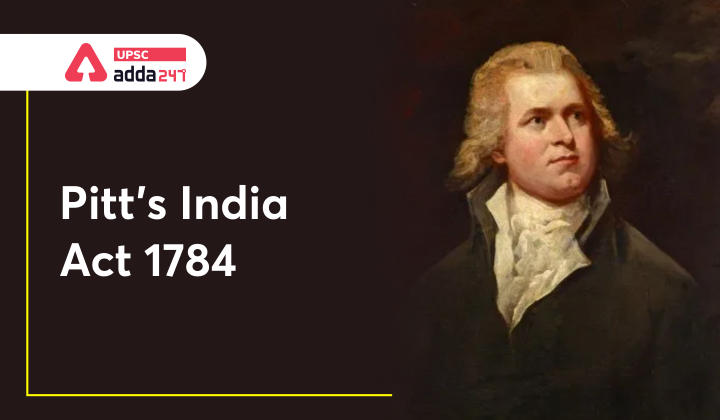Table of Contents
Background
- Regulating Act of 1773 proved to be a failure and did not give the expected outcomes. Loopholes in the Act were resulted in conflicts within the Governor-general’s council and also with the Supreme Court.
- Anglo-Maratha wars and Anglo-Mysore wars resulted in the draining of the treasury of the East Indian Company. This led to the application of another one million loans from the state by the EIC.
- This gave another opportunity to the British government to increase its control over EIC which was done through the Pitts India Act of 1784 (also called the EIC Act 1784).
Get free video for UPSC CSE preparation and make your dream of becoming an IAS/IPS/IRS a reality
Key provisions of the Pitts India Act
- Separation of political and commercial functions of the company: by introducing the system of dual control of India by the Government of Great Britain and British East India Company. These changes continued till 1858.
- Board of Control (BoC): Political affairs of the company were made subordinate to the British government. To achieve this BoC was created which had six members. The Secretary of the State was entitled to be the president of the BoC. Its key responsibilities were-
- Empowered to control all the matters of the civil or military government or revenues of the British possessions in India.
- The board was given full access to the company’s records.
- Authority to send Governors to India and full authority to alter them.
- Court of Directors (CoD): It represented the EIC and was allowed to manage the commercial affairs in India.
- Board of Control (BoC): Political affairs of the company were made subordinate to the British government. To achieve this BoC was created which had six members. The Secretary of the State was entitled to be the president of the BoC. Its key responsibilities were-
- Changes in India:
- Governor General’s council: its size was reduced to three members including the commander-in-chief of the King’s army in India.
- He was also given the casting vote in situations of equally divided opinion in the council. This strengthened the Governor-general’s position in the council.
- The Council now came under indirect control of the British Government through the Board of Control.
- Centralization of power: Powers of governors of Madras and Bombay presidencies were further reduced and made subordinate to the Governor-general of Bengal in matters of war, revenue, and diplomacy.
- Governor General’s council: its size was reduced to three members including the commander-in-chief of the King’s army in India.
- Secret Committee: It consisted of three directors and was responsible for transmitting the orders of the Board to India. Its main role was to work as a link between the Board of control and the Court of Directors.
List of borrowed Features of the Indian Constitution and their Source Countries
Significant changes
- The East India Company’s territories in India were for the first time called the ‘British possessions in India’.
- The British Government was given supreme control over the Company’s affairs and its administration in India.
Read more –Regulating Act of 1773




 TSPSC Group 1 Question Paper 2024, Downl...
TSPSC Group 1 Question Paper 2024, Downl...
 TSPSC Group 1 Answer key 2024 Out, Downl...
TSPSC Group 1 Answer key 2024 Out, Downl...
 UPSC Prelims 2024 Question Paper, Downlo...
UPSC Prelims 2024 Question Paper, Downlo...




